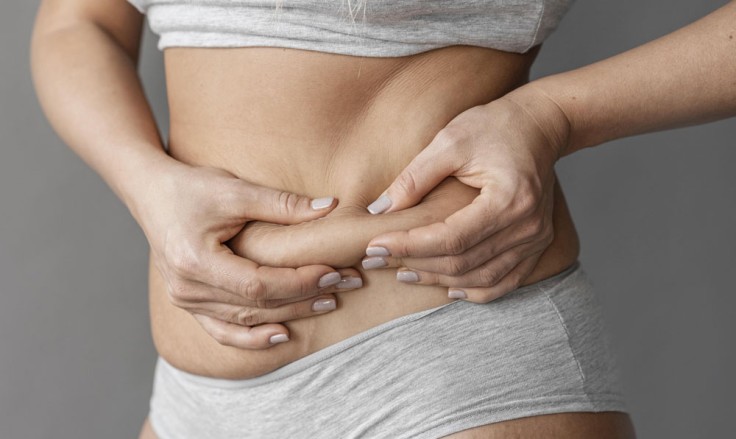Introduction
Significant weight loss can transform both appearance and health. Yet, for many individuals, loose or sagging abdominal skin remains long after the weight has gone. This excess skin, known as a pannus, can cause discomfort, irritation, and self-consciousness. A panniculectomy offers a lasting solution, removing this extra tissue to create a smoother, more comfortable abdominal contour.
What Exactly Is a Panniculectomy?
A panniculectomy is a surgical procedure designed to remove the pannus - the apron of excess skin and fat that hangs from the lower abdomen. Unlike a tummy tuck, it doesn’t focus on tightening muscles or reshaping the upper abdomen. Instead, it purely targets excess tissue for improved comfort and hygiene.
This operation is life-changing for those who have lost substantial weight or experienced pregnancy-related stretching. By removing the heavy skin fold, patients enjoy better posture, reduced irritation and renewed confidence in daily movement.
When Is a Panniculectomy Recommended?
Surgeons typically recommend panniculectomy for patients with persistent excess skin. This might follow major weight loss or bariatric surgery. It’s also suitable for when lower abdominal skin causes chronic rashes or difficulty with exercise.
The procedure isn’t cosmetic alone, it’s often medically beneficial. Skin folds can trap moisture, leading to infection or discomfort. Removing them enhances hygiene and mobility, helping patients fully enjoy their weight-loss success.
How the Panniculectomy Procedure Works
Before surgery, a thorough consultation ensures the plan is tailored to each individual’s needs. The procedure is performed under general anaesthesia and lasts around 2-4 hours.
The surgeon makes a horizontal incision along the lower abdomen and removes the pannus. They then reshape the remaining tissue for a natural contour. The incision is then closed with care to promote even healing. In some cases, the belly button may be repositioned for better aesthetic balance.
After the operation, patients typically stay overnight for observation. The result is a flatter, more comfortable abdomen that aligns with the body’s natural proportions.

Panniculectomy Recovery: What to Expect
Recovery from panniculectomy requires patience and care. Mild discomfort, swelling and tightness are all common during the first week. Patients usually return to normal activities within 4-6 weeks, depending on healing progress.
Wearing compression garments supports tissue recovery and helps reduce swelling. Gentle walking encourages circulation, while ample rest allows the body to heal effectively. Following all post-operative instructions ensures the best long-term results.
Physical and Emotional Benefits
The transformation after panniculectomy extends beyond the physical. Many patients experience renewed confidence and comfort in their daily routines. Removing excess tissue allows clothes to fit better and exercise to feel easier.
Emotionally, the impact can be equally profound. Those who’ve worked hard to lose weight often view panniculectomy as the final step in their journey. The renewed silhouette reflects their success and encourages lasting self-esteem.
What’s The Difference Between Panniculectomy and a Tummy Tuck?
Although they sound similar, panniculectomy and tummy tuck (abdominoplasty) differ in focus.
- A tummy tuck removes excess skin while tightening abdominal muscles for a more sculpted appearance.
- In contrast, panniculectomy focuses solely on removing the hanging skin apron without muscle repair. It’s functional rather than purely aesthetic, aiming to enhance comfort, posture, and hygiene.
Many patients later choose to combine both procedures for optimal contouring. However, panniculectomy alone already delivers substantial improvement.
Who Makes a Good Candidate?
Ideal candidates are adults with stable weight and good overall health. Those experiencing persistent skin irritation, discomfort, or mobility issues often benefit most.
A stable weight for at least six months helps ensure the best outcome. Smoking cessation and good nutrition also support smooth healing. During consultation, your surgeon will evaluate health history, goals and skin elasticity before confirming candidacy.
Conclusion
A panniculectomy is more than a contouring procedure; it’s a step toward renewed comfort and confidence. By removing excess skin, it allows the body to reflect the effort behind weight loss. With expert guidance and proper aftercare, patients experience long-lasting benefits that improve quality of life.
Are you interested in finding out more about whether a panniculectomy is right for you? Book a consultation on the ACIBADEM Beauty Center website.
Frequently Asked Questions
A panniculectomy removes excess skin only, while a tummy tuck also tightens abdominal muscles.
Yes, but scars fade over time and are positioned discreetly below clothing lines.
Most patients resume light activity after two weeks and full activity within six weeks.
Yes, removing the excess pannus makes movement easier and reduces skin irritation.
Yes, provided patients maintain a stable weight and healthy lifestyle after surgery.














